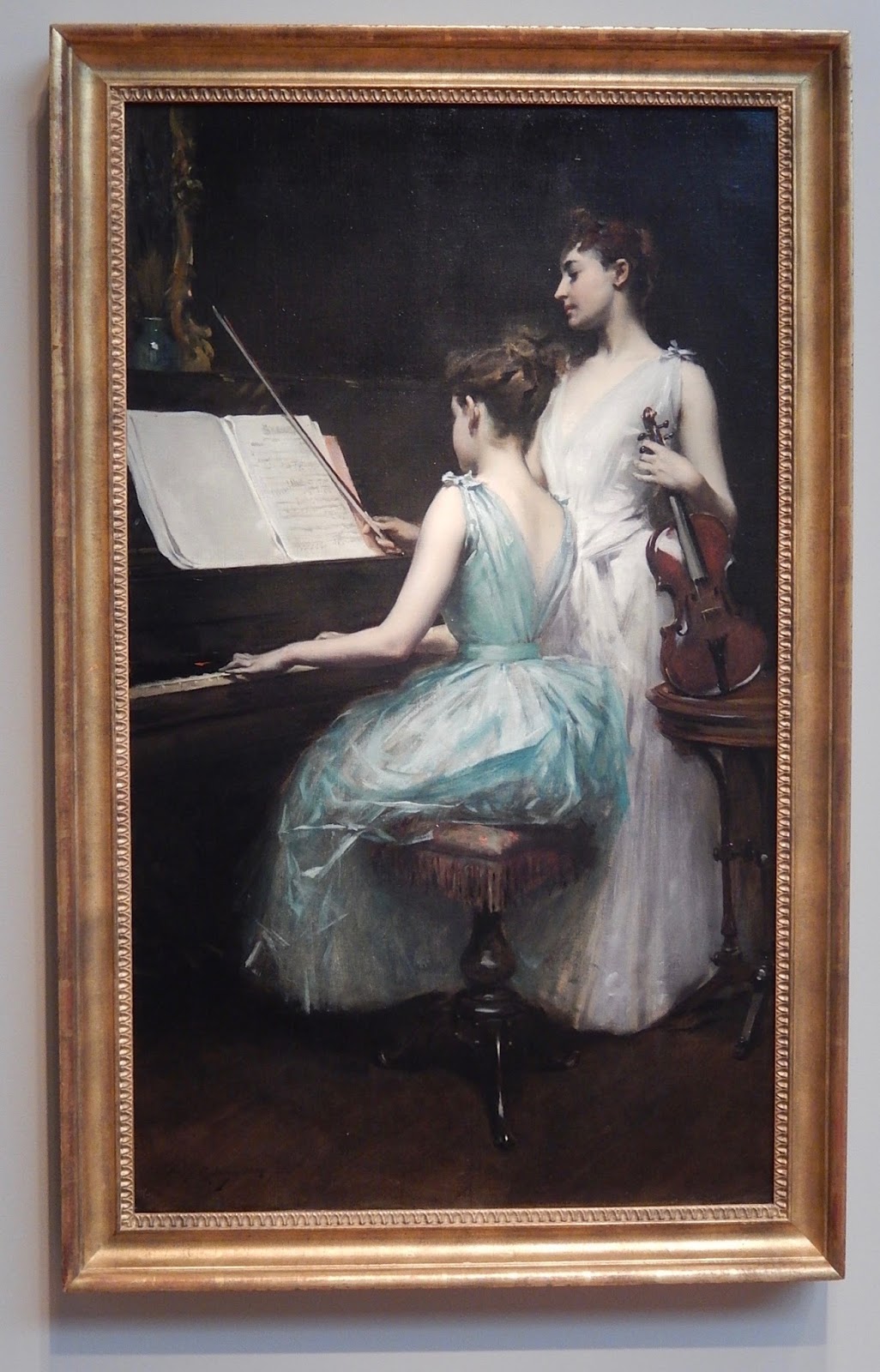It seems that van Rysselberghe really liked Pointillism and the related Divisionism a lot, never totally abandoning (while watering down) the concepts later in his career when many of his paintings were more conventional.
But he had to earn a living and, as for many painters, that required making portraits. So van Rysselberghe often tried to include as much Pointillism as he could in a number of those portraits. The problem is, Pointillism and portraiture do not mix easily. That's because Pointillism in its pure form cannot handle small details and sharp edges, things that portraits traditionally require.
So compromises usually had to be made, as the images below indicate. They are presented in roughly chronological order.
Portrait of Alice Sèthe - 1888
An early Pointillist portrait.
Mathilde Vereeken - 1891
This features many little colored dots on the subject's face, but van Rysselberghe had to use some conventional brushwork on the ear, the lower part of the nose and upper lip, and the eyes.
Emile Verhaeren - 1892
A mix of hard edges and dots here.
Jeune fille en vert - c. 1892
Pointillism doesn't always work for hair, either.
Anna Bloch in her Studio - c. 1893
By the time he did this portrait, Rysselberghe was resorting to conventional painting for faces and hands.
Maria and Elizabeth van Rysselbergh
Around 1900, he was using plenty of sharp lines, leaving Pointillism for flat, plain surfaces.
Portrait of Mme Demolderlder (detail) - 1902
Closer view of how he was treating faces.
Mevrouw Henry van de Velde-Sèthe
From the same era: a selective mix of forms and dots.
Woman at Her Toilette - 1905
Since this wasn't a commissioned portrait, Rysselberghe could enjoy using much pointillism here, though some lines are strategically used.
André Gide - 1908
An example of his brushwork in a more Divisionism mode, though key facial features are drawn, not dabbed.
Madame von Bedenhausen avec son enfant Luli - 1910
Pointillism and Divisionism can be seen here, but they are incidental to the depiction.
Portrait of Margarethe Kühlmann-Stumm - 1913
This portrait has bright colors, but otherwise is almost conventional.
Mrs Schlumberger and her Daughter Luli - 1918
Another near-conventional work, but the coloration gives it an Impressionist feeling even though sharp details are present.






















































